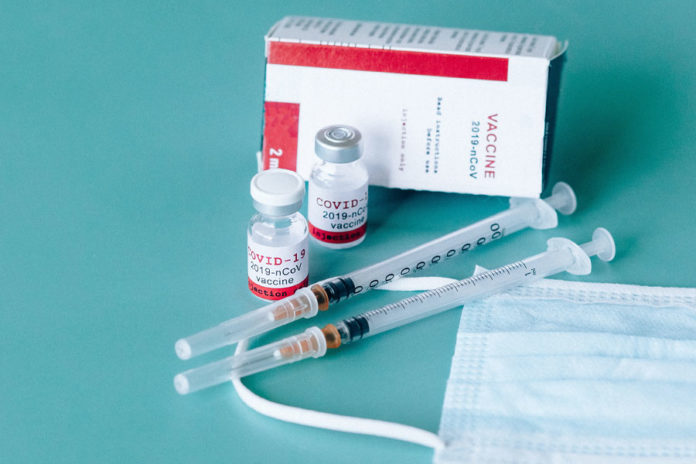It has been almost one year since the COVID-19 vaccine was released. Lifestyles have been significantly and irreversibly altered, and people have been learning how to adjust in their own lives, as society also functions differently as a whole. While some people have lost loved ones and friends, others have lost businesses that couldn’t survive the shutdowns; some continue to suffer the symptoms of “long COVID;” and everyone has had their resilience tested in one way or another.
Millions of people across the United States and the world have rolled up their sleeves and have gotten the COVID-19 vaccine to try to restore some normalcy to their lives, by protecting themselves and their loved ones from severe illness. For most people, being vaccinated means embracing loved ones again, attending social gatherings, and going back to school or work without having fears of becoming severely sick or being hospitalized. However, some people have not gotten the COVID-19 vaccine because they remain hesitant. Reasons include personal fears about the vaccine science and safety, or not perceiving COVID-19 as a high risk or threat. Also, misinformation about the COVID-19 vaccine is widespread and can influence decisions.
Only with robust and reliable information can people make the best possible decisions for themselves and their families. The situation shifts rapidly, as science makes new discoveries and new variants emerge. Keeping a finger on the pulse of the vaccination situation can lead to individuals and families making better choices.

The City of Philadelphia has been monitoring the vaccination rate since May 3rd, 2021, and they update their website twice a week. According to the website https://www.phila.gov/programs/coronavirus-disease-2019-covid-19/data/vaccine/ as of February 13th, 56% of Latinos between the age of 12-17 have gotten the COVID-19 vaccine; 63% between the age of 18-44; 85% between the age of 45-64; and 89% that are 65 years or older have gotten the COVID-19 shots. Overall, Hispanics/Latinos have a lower vaccination rate between the ages of 12-44, compared to non-Hispanic Whites. In total across the city, 80% of Latinos, 67% of African Americans, 97% of Asians, and 73% of Whites are considered fully vaccinated. According to the Pennsylvania Department of Health, as of February 11th, 50.9% of Latinos are fully vaccinated in Pennsylvania. The CDC published vaccine data and as of February 14th, 19.6% of Latinos have been fully vaccinated in the United States. By these metrics, the Latino community in Philadelphia has a high rate of vaccination.
The COVID-19 vaccine has made a great impact, by preventing serious illness, hospitalization, and death. According to the Philadelphia Inquirer, at the beginning of January 2022, Pennsylvania hospitals were reporting that the majority of the COVID-19 patients were unvaccinated. Specifically, some hospitals reported hospitalization among the unvaccinated as high as 90% (McDaniel & McCarthy, 2022). Given these statistics, it’s important to understand and overcome unneeded doubt about the vaccine. One study published about COVID-19 vaccination hesitancy among Hispanics and African Americans cites several causes of reluctance, such as medical mistrust; the rapid pace of vaccine development; history of racial and ethnic discrimination; exposure to conspiracy theories, myths, and misinformation; and concerns about safety and effectiveness. The authors provide some common-sense recommendations about how to open a dialogue – most importantly, through respectful communication about differences in perspectives. Additionally, they recommend using fact-based, non-confrontational, and non-judgmental approaches. Lastly, they conclude that healthcare providers have a critical role in building trust and recommending the COVID-19 vaccine to their patients. In addition to the vaccine hesitancy predictors mentioned, other non-medical factors can prevent vaccine uptake and they should be acknowledged such as the lack of transportation to and from the vaccine site, documentation status, language barriers, and work schedules that do not allow for time off.
Families and communities can support each other in being safe from COVID-19 by encouraging vaccination. For example, families and friends can carpool together to assist individuals who lack a form of transportation to get to the vaccination site. Additionally, interpreters can be present at vaccination sites to reduce language barriers. Overall, the CDC states that the COVID-19 vaccine is a safe way to build immune protection. Specifically, the vaccine provides a more reliable immune response than getting sick with COVID-19. Therefore, waiting to get vaccinated can be very dangerous because it needlessly puts people and their loved ones at risk of more severe illness. Lastly, several factors impact COVID-19 vaccine hesitancy, and it is important that we all learn how to leverage science to inform, support, and advocate for change, that can make a positive difference.






















